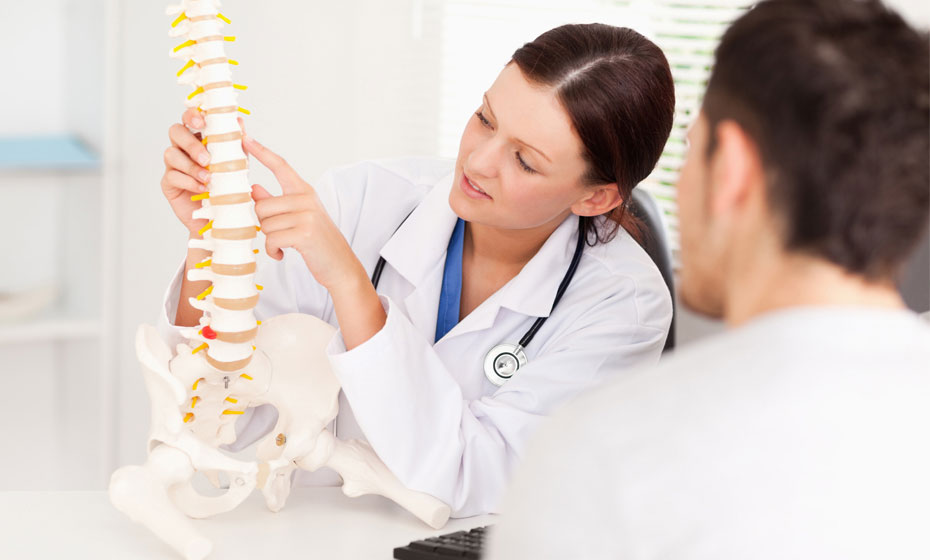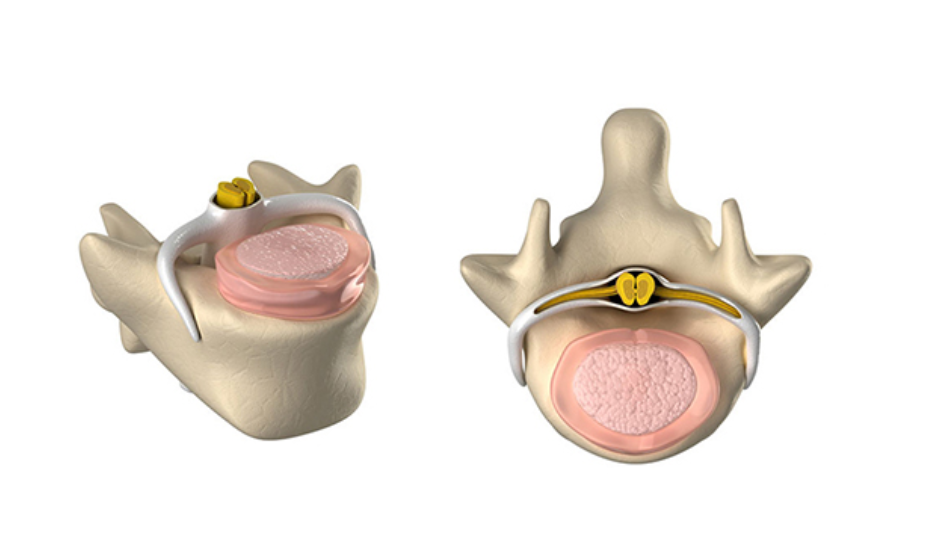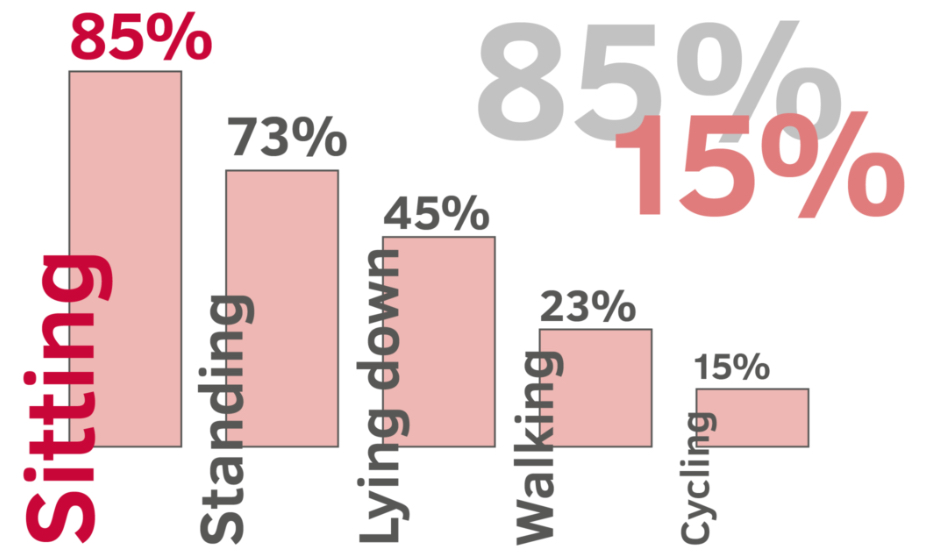 | The back in close-upOur spines provides our bodies with support and protection. At the same time, the spine allows us to move in all directions. Viewed from the side, the spine has a natural S-shaped curve. The spinal column itself consists of vertebrae and intervertebral discs. The vertebrae are robustly interconnected by the spinal cord which is made of nervous tissue. There are 32 or 33 vertebrae which can be divided into five groups:
|
The intervertebral discOn the front of a vertebra is the vertebral body. On the rear is the vertebral arch. Attached to the vertebral arch are three protuberances (or ‘processes’) which serve to connect ligaments and muscles. The vertebrae are separated from each other by the intervertebral discs. The intervertebral disc is a tough fibrous ring which has an inner gel-like centre. This acts as a shock absorber. The intervertebral discs also ensure that the spinal column can bend. In normal everyday life they take the strain of body postures and the muscles that are used to this end, and for external loads, such as lifting. An incorrect posture or strain on the back can cause the intervertebral disc to bulge and press against the nerve. This causes pain. An annoying side effect is that the back muscles are unintentionally forced to contract to protect the back as much as possible. Often a physiotherapist is needed to relax the muscles. |  |
 | Backache and sittingBackache can be caused by several factors: physique, physical and mental condition, and age. However, most back problems can often be put down to an unhealthy lifestyle, including an incorrect sleeping or sitting posture. Research amongst back patients shows that most problems (85%) are the result of a bad sitting posture. Likewise, when we look at backache-related workplace absenteeism, it’s noticeable that more than half of those concerned spend their working hours sitting down. Scientific research has identified how the back is put under strain when different postures are adopted. The results show that, when slouching, the back is put under 3 to 5 times more strain than when lying. The more strain, the greater the risk of damage and back problems. Research has also shown that back strain is reduced significantly on a Fitform armchair. |



